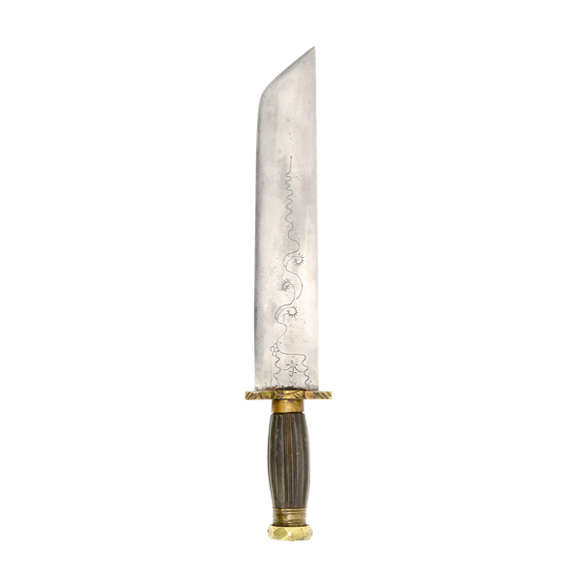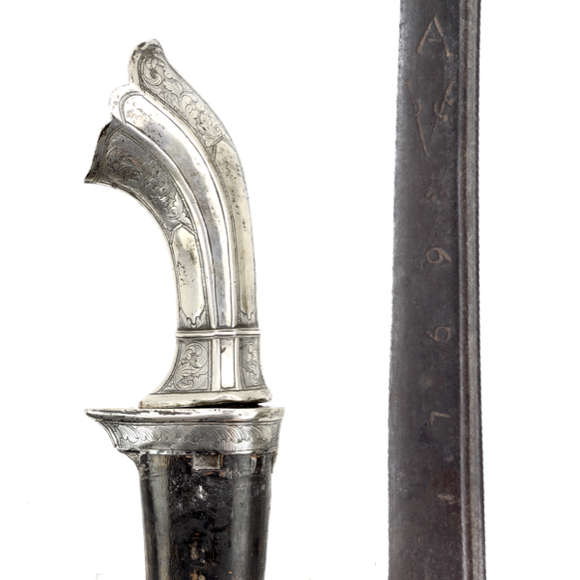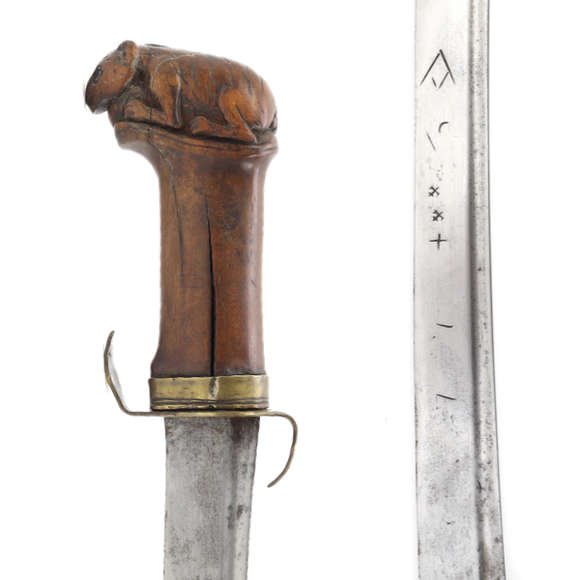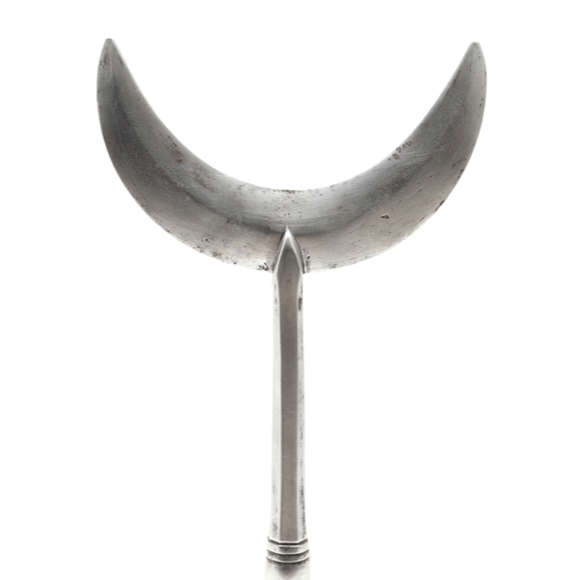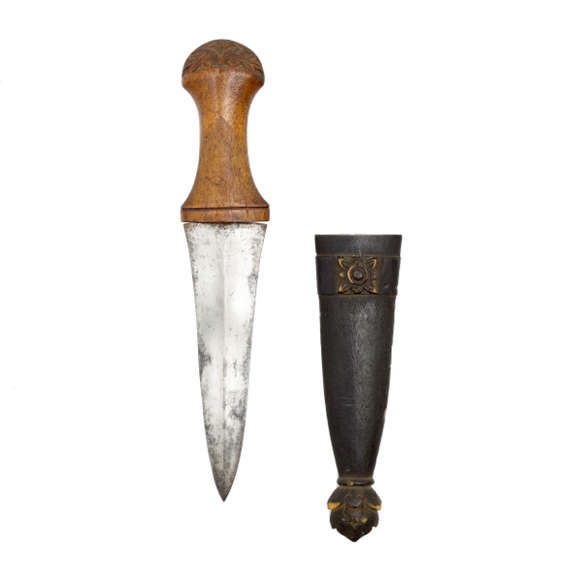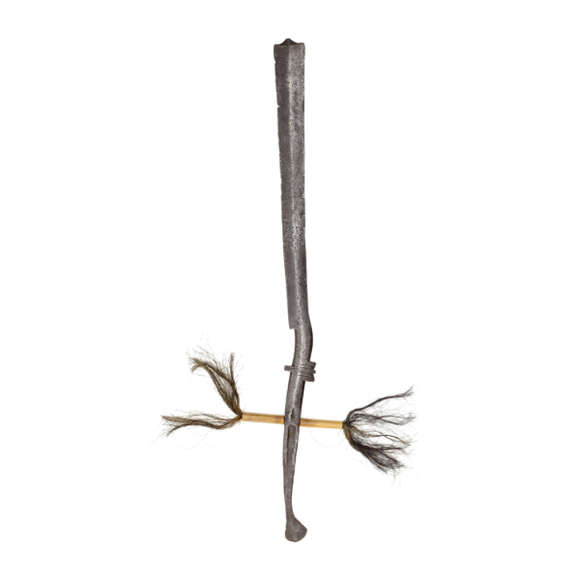Broad bladed example with horn hilt and engraved blade.
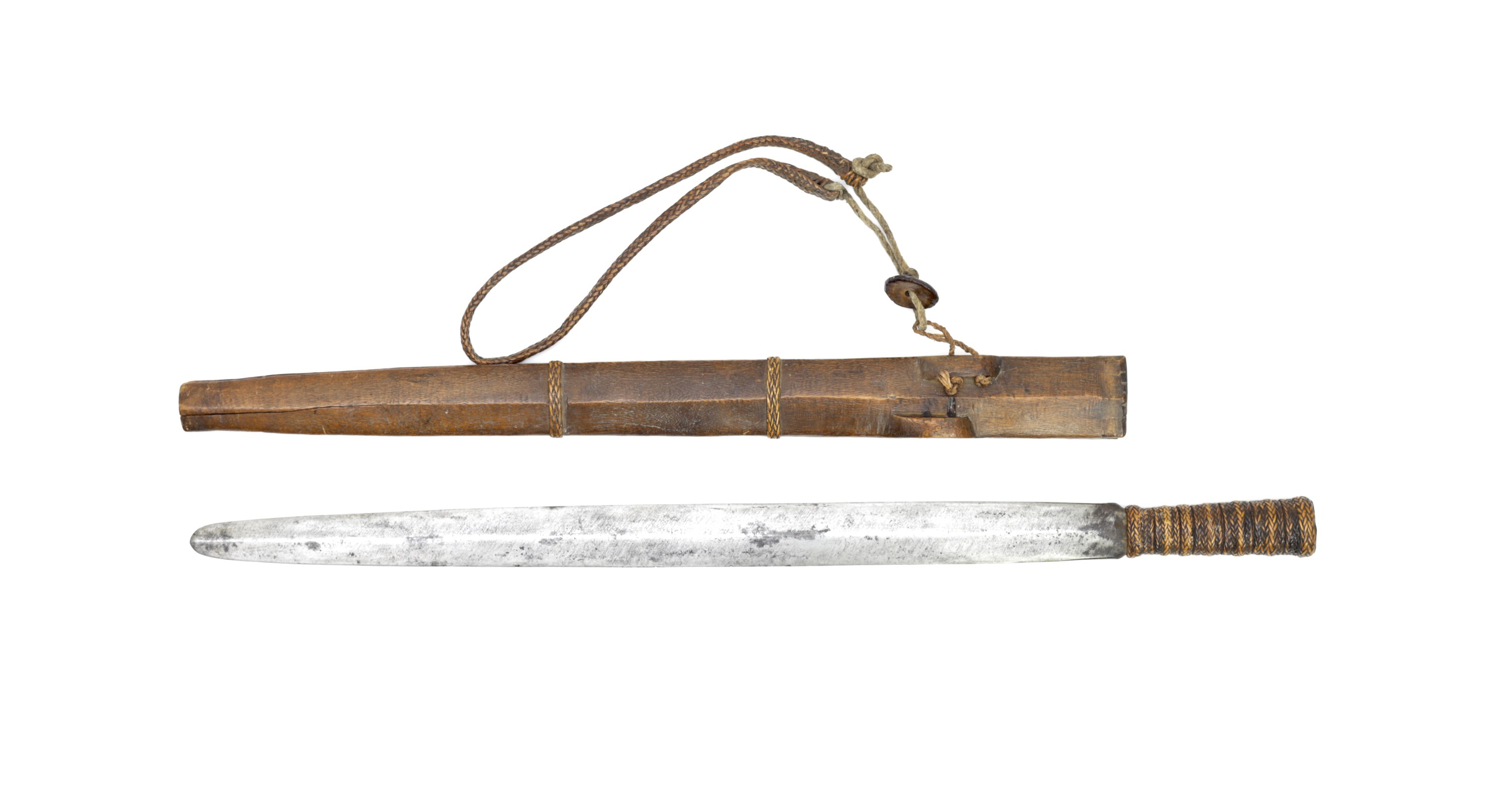
Sheathed 64.1 cm
Sword 63.6
53.2 cm
Base 8.5 mm
Middle 6 mm
5 cm from tip 4 mm
Base 32 mm
Middle 36 mm
5 cm from tip 25 mm
555 grams
17.5 cm from hilt
Iron, steel, wood, rattan, plant fiber
Batad Ifugao headhunters
Northern Luzon
19th century
From a German collection
Introduction
The hinālung is a double-edged dagger or sometimes as large as a shortsword. They typically have a tang that is rolled into a socket of oval cross-section.1
A Batad Ifugao dictionary says the following:
Noun
"A double-bladed bolo of various lengths, usually carried for self defense; large varieties are sometimes used for cutting trees."
Cultural note
"A double-bladed bolo is in one metal piece with a rolled handle, hālung, usually covered with a woven rattan handle covering, allūbung. One variety has a rolled handle base into which a wooden shaft may be inserted to be used, especially in the forest, as a spear." 2
I am personally skeptical about their use as a spearhead, for the following reasons:
1. Such use has never been documented, and seems to rely on guesswork by non-native observers.
2. Ifugao spears are typically tanged, not socketed.
3. Most men carried a spear or javelin anyway. Why would one need a knife that could be made into one? Especially since it's about as much effort to carry a spare headless shaft as it would be just to carry a complete spear.
Notes
1. Some more examples can be seen at vikingsword.com.
2. Sil Philippines Languages entry hinālung.
This example
Somewhat larger than the reference examples I could find, more of a shortsword than a dagger. Blade is double-edged and leaf shaped, with diagonal tool marks. Edges are smoother, suggesting harder steel there, so I think it's a three-plate construction with a high carbon edge plate between two layers of softer iron or steel.
In handling it really feels like a good shortsword. Enough of a forward balance for heavy cuts. Very much like a good, stout Chinese jiàn.
Tang is hammered flat and rolled into a socket that serves as a hilt. It is wrapped with braided rattan for improved grip.
The scabbard consists of two pieces of wood, held together by two pieces of braided rattan. A third was probably once present at the top, now missing. The scabbard retains a rattan and plant fiber carrying strap.
Condition
Good, original, untouched condition. Some staining on blade, but stable. A split in the lower part of the scabbard and missing its rattan binding at the top.
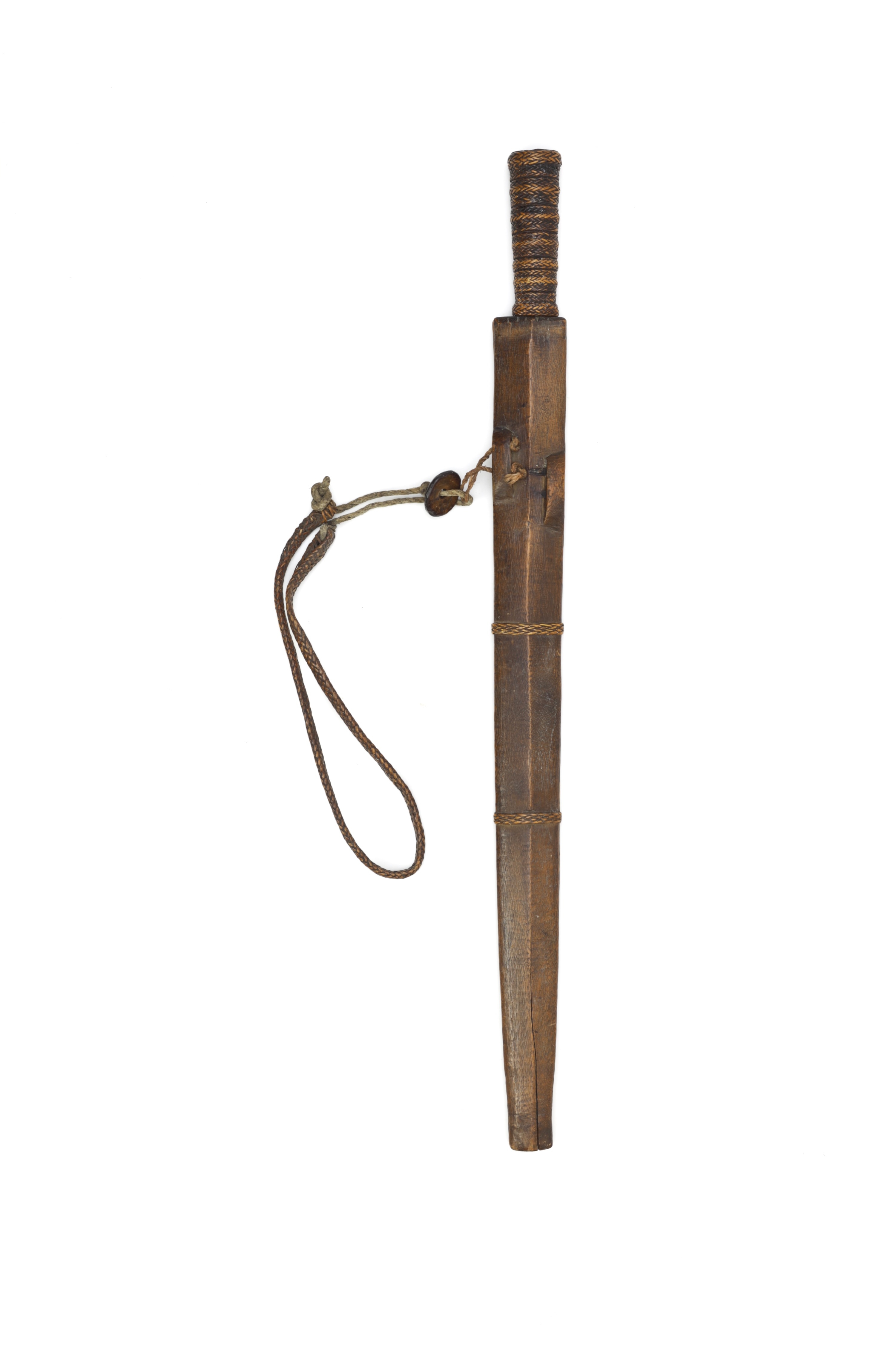
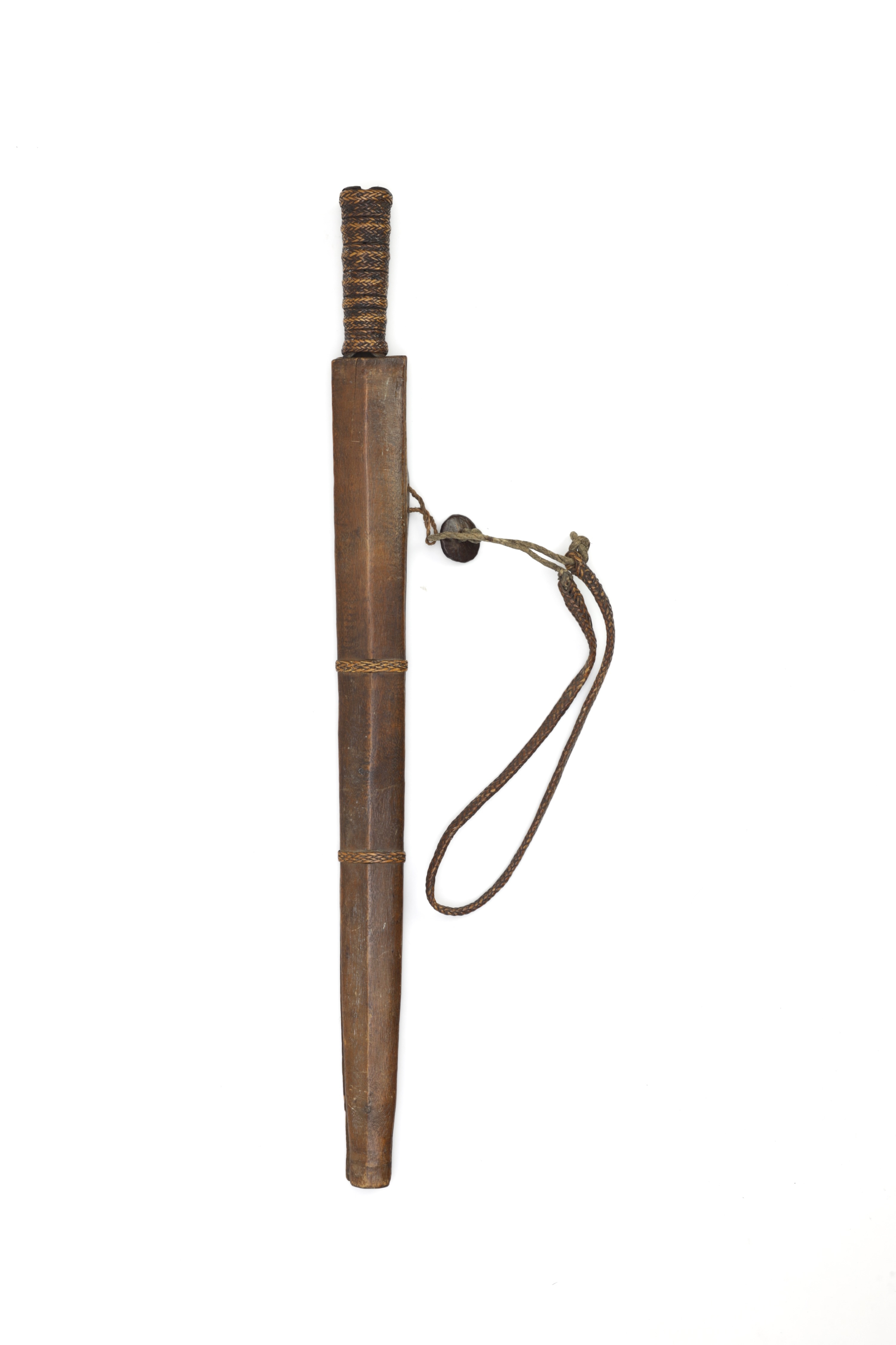
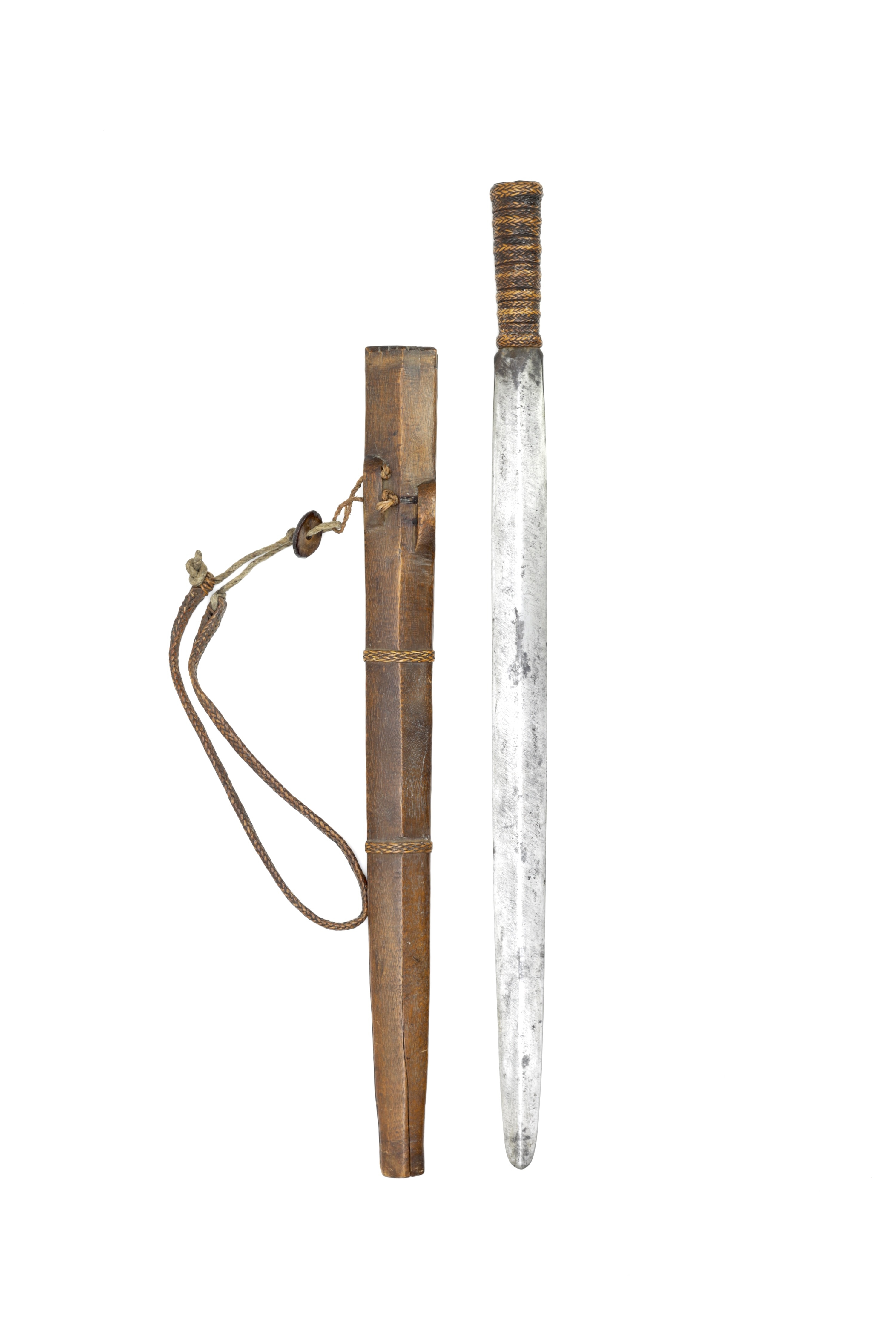
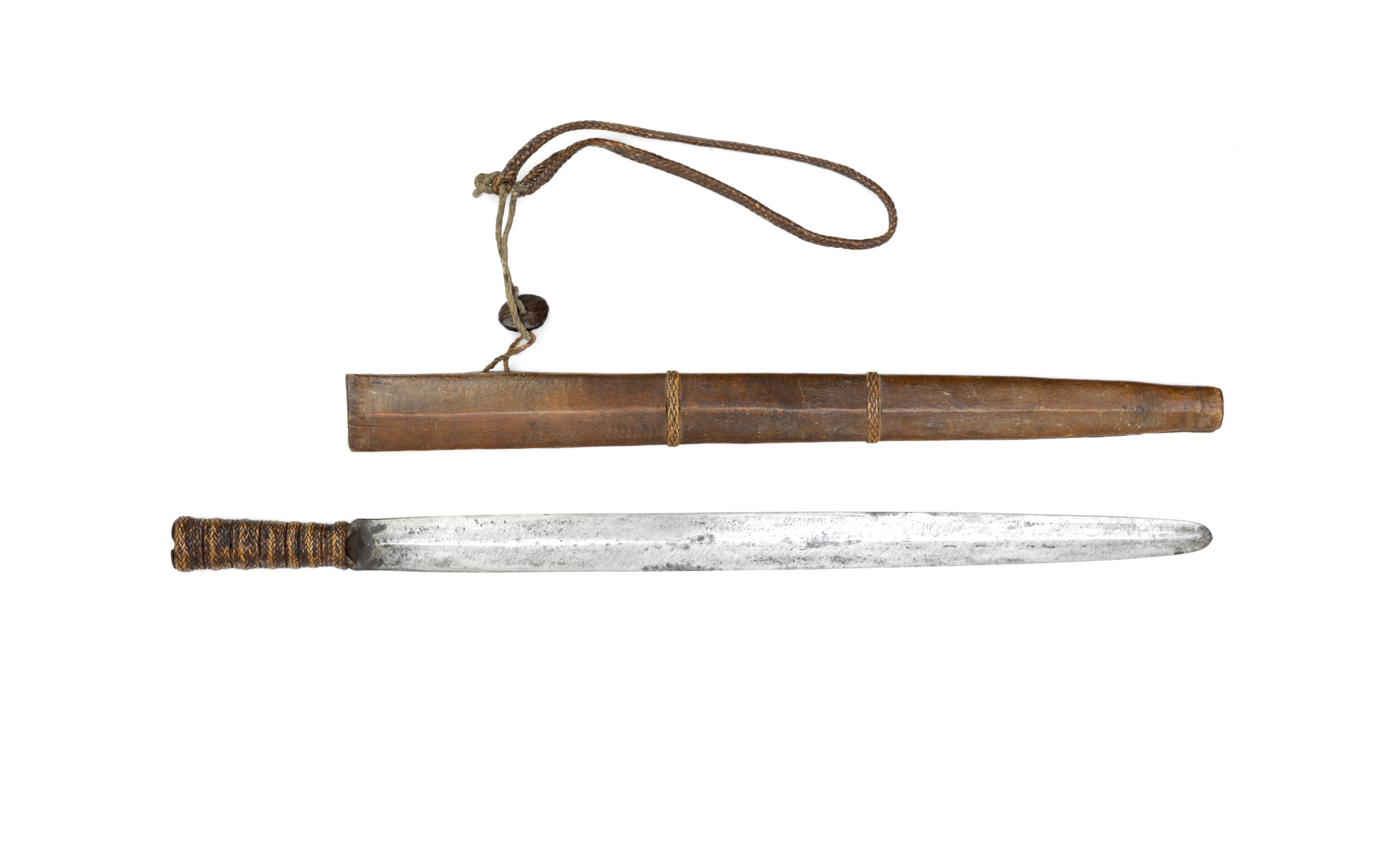
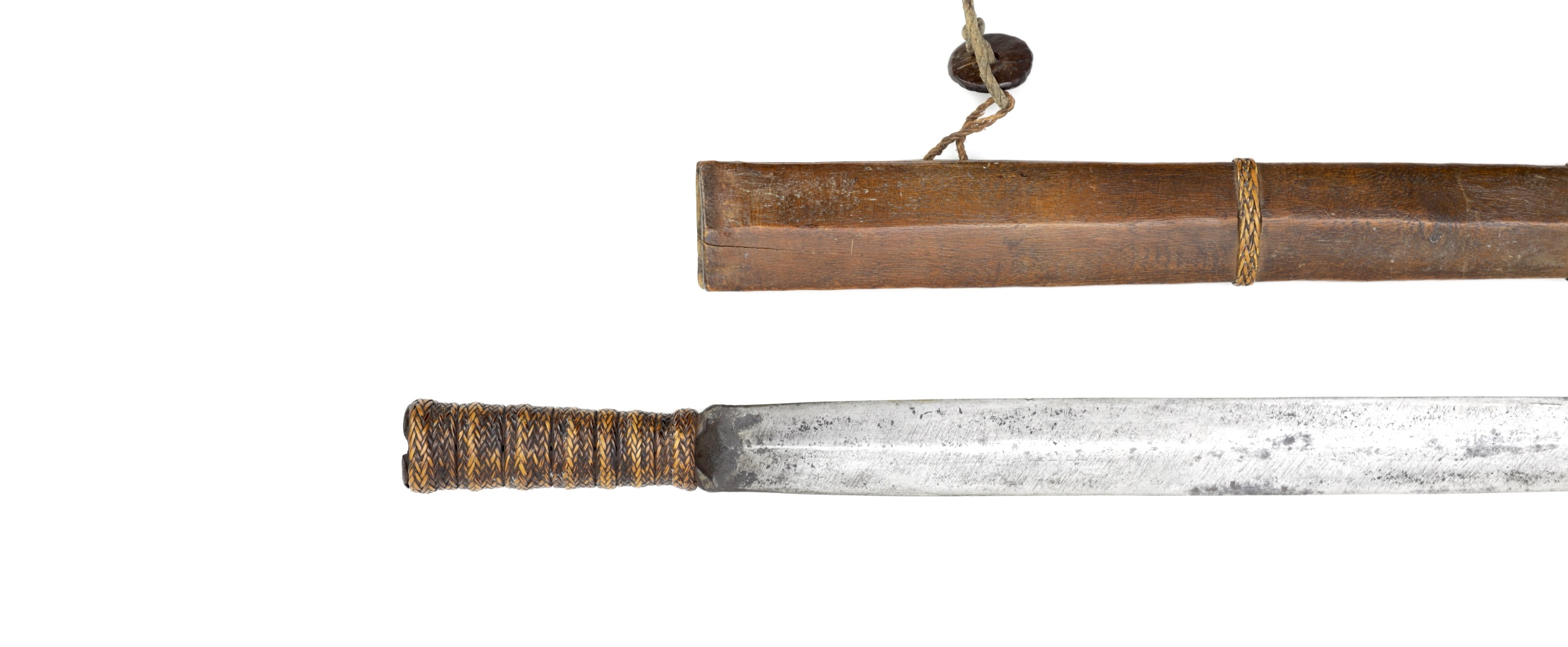
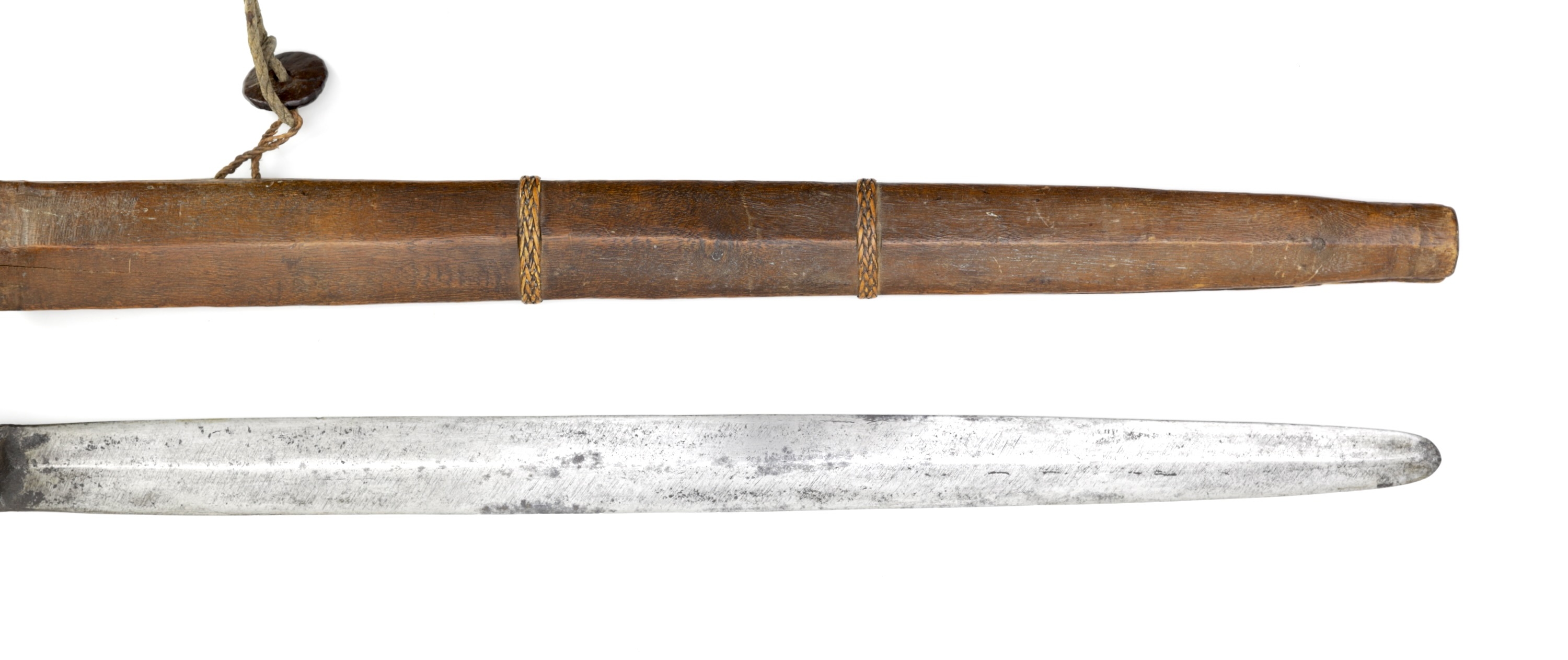
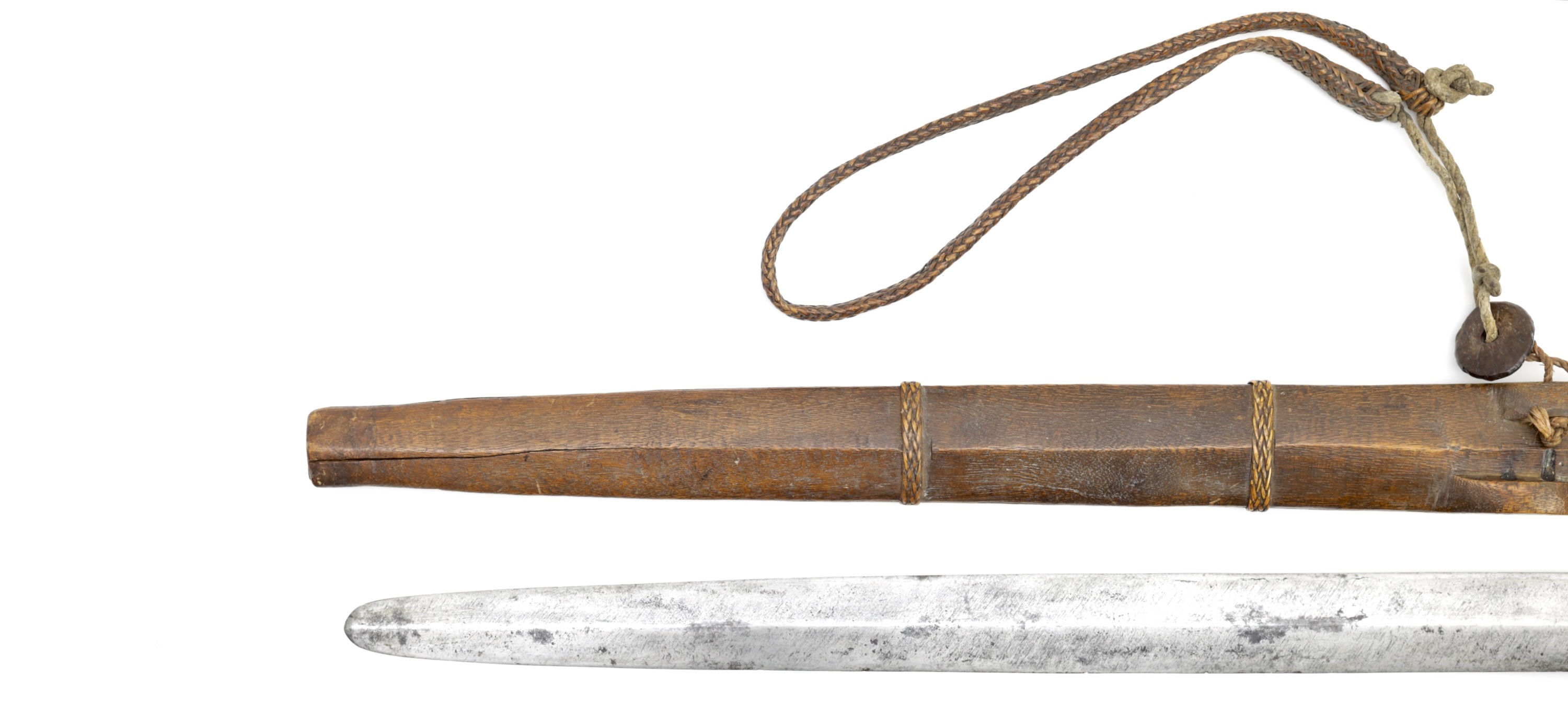
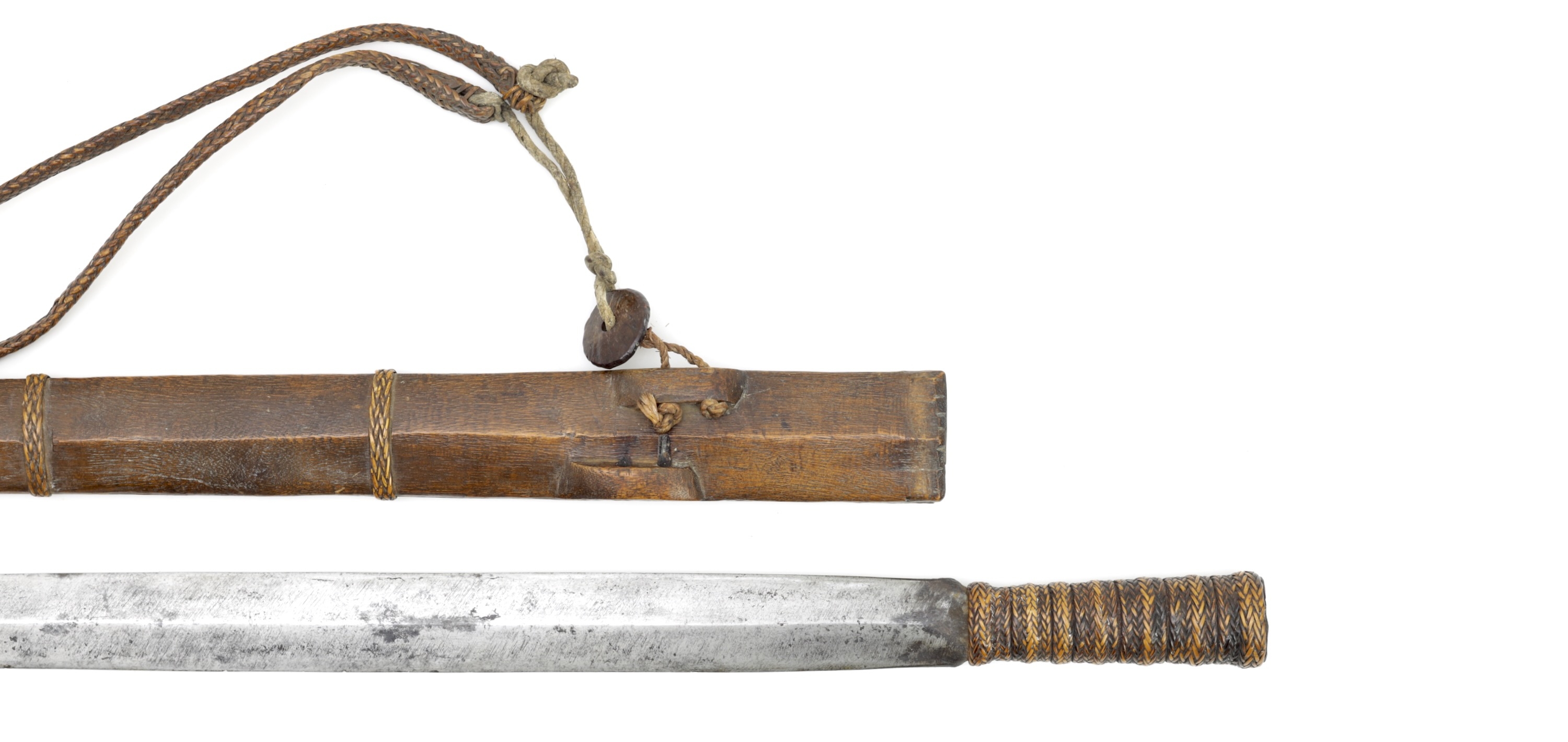


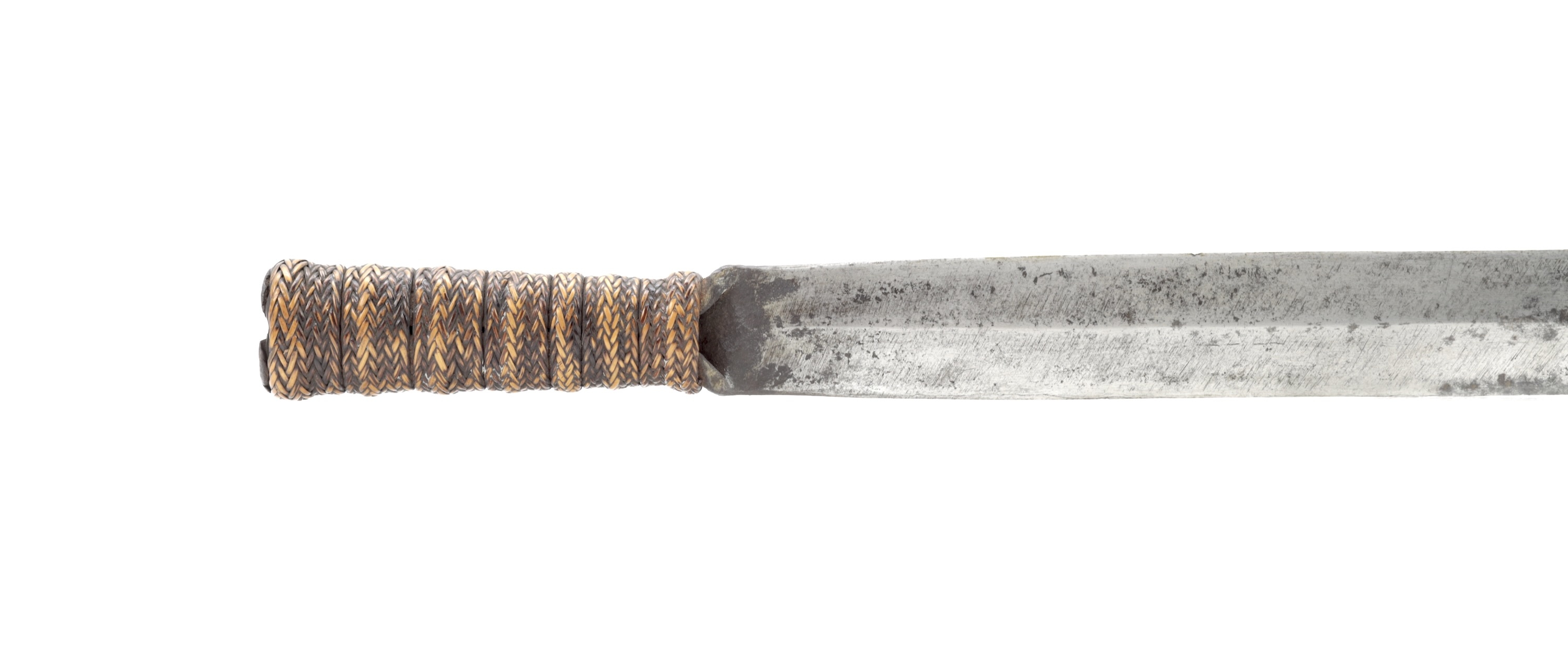
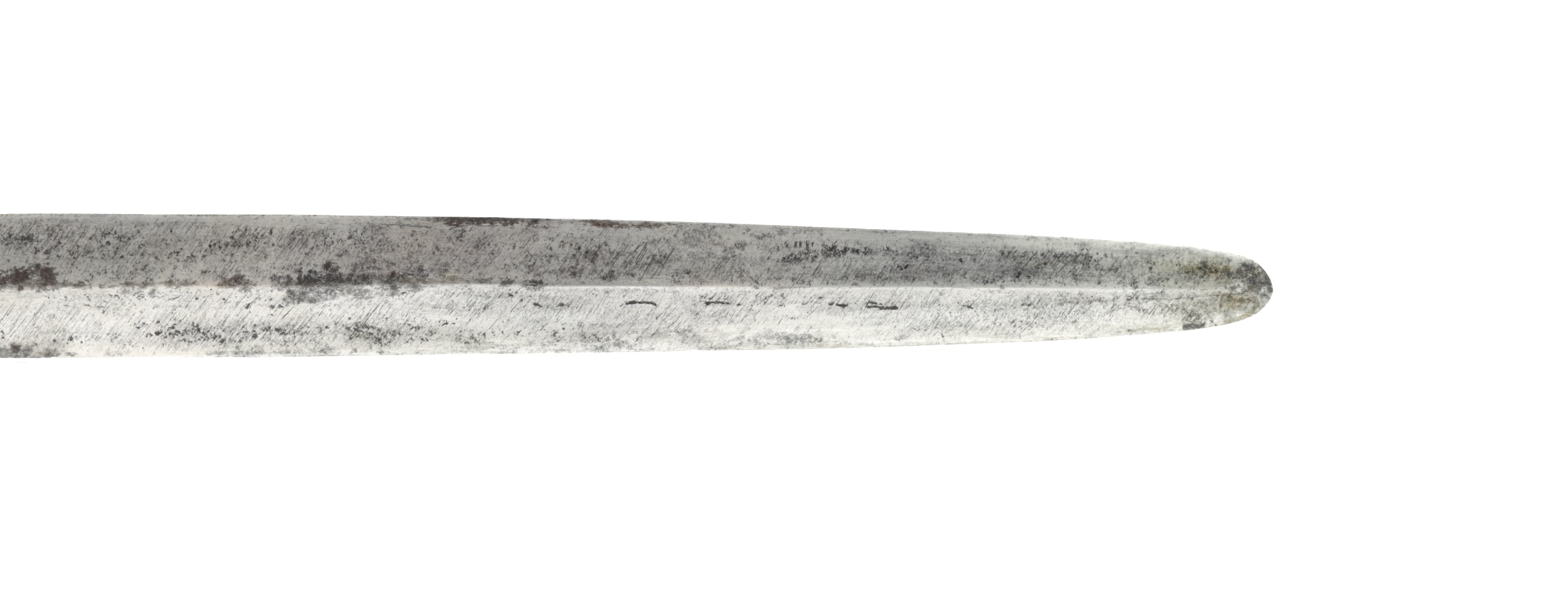

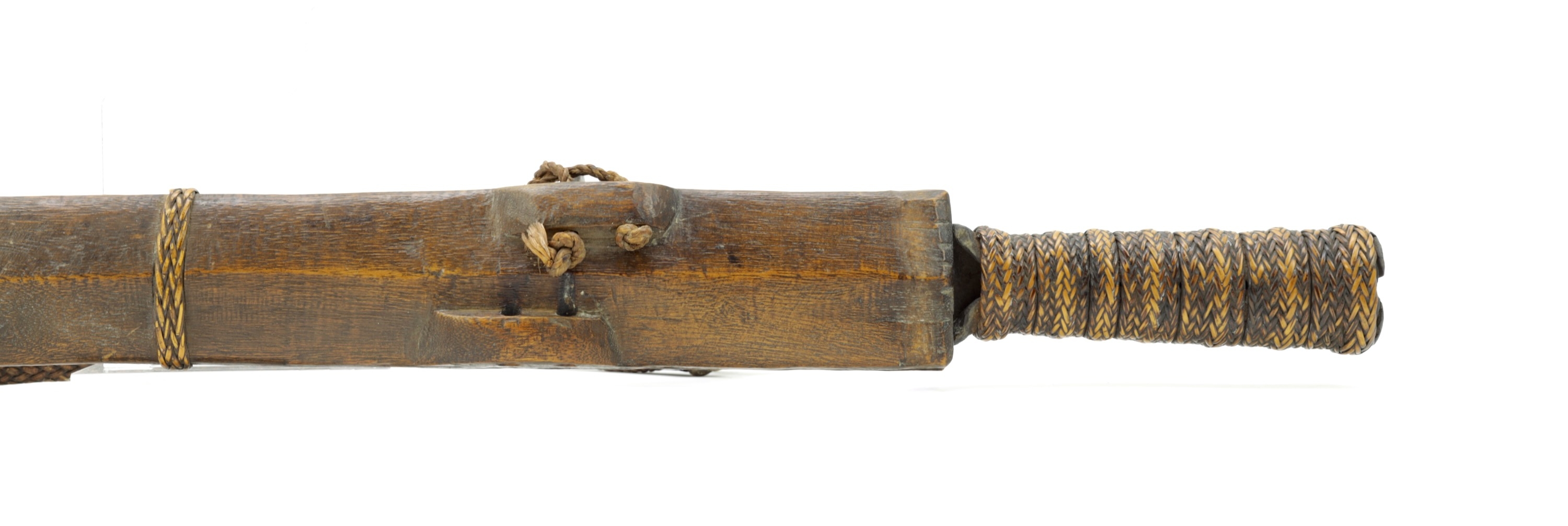
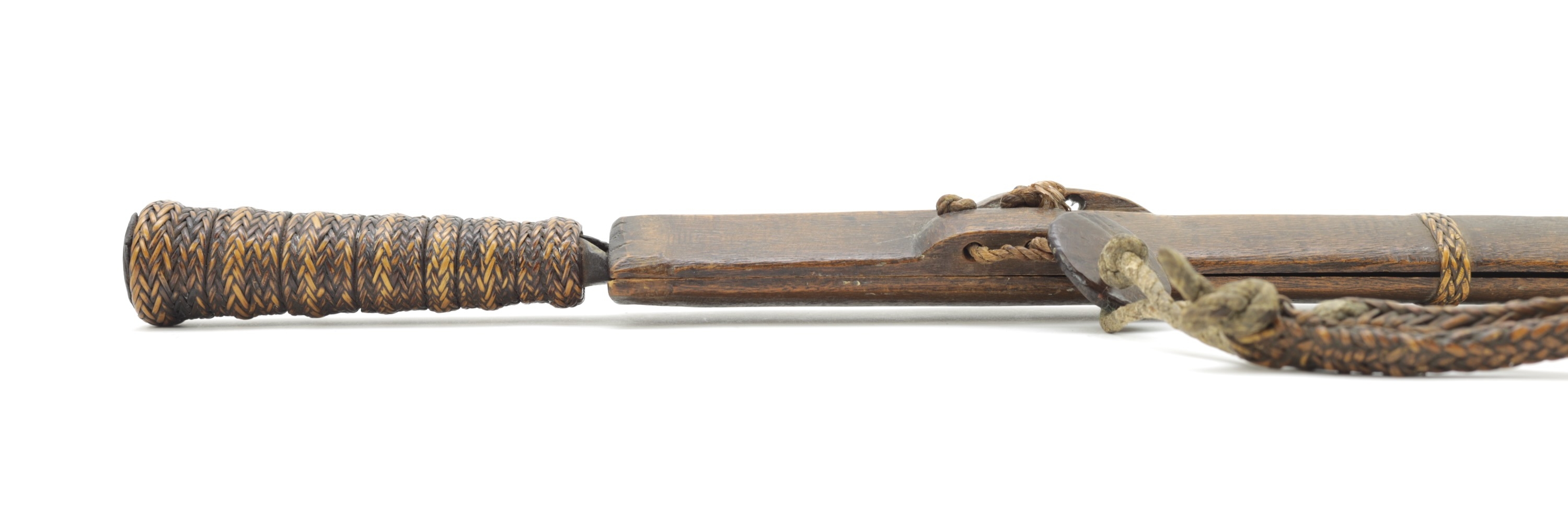

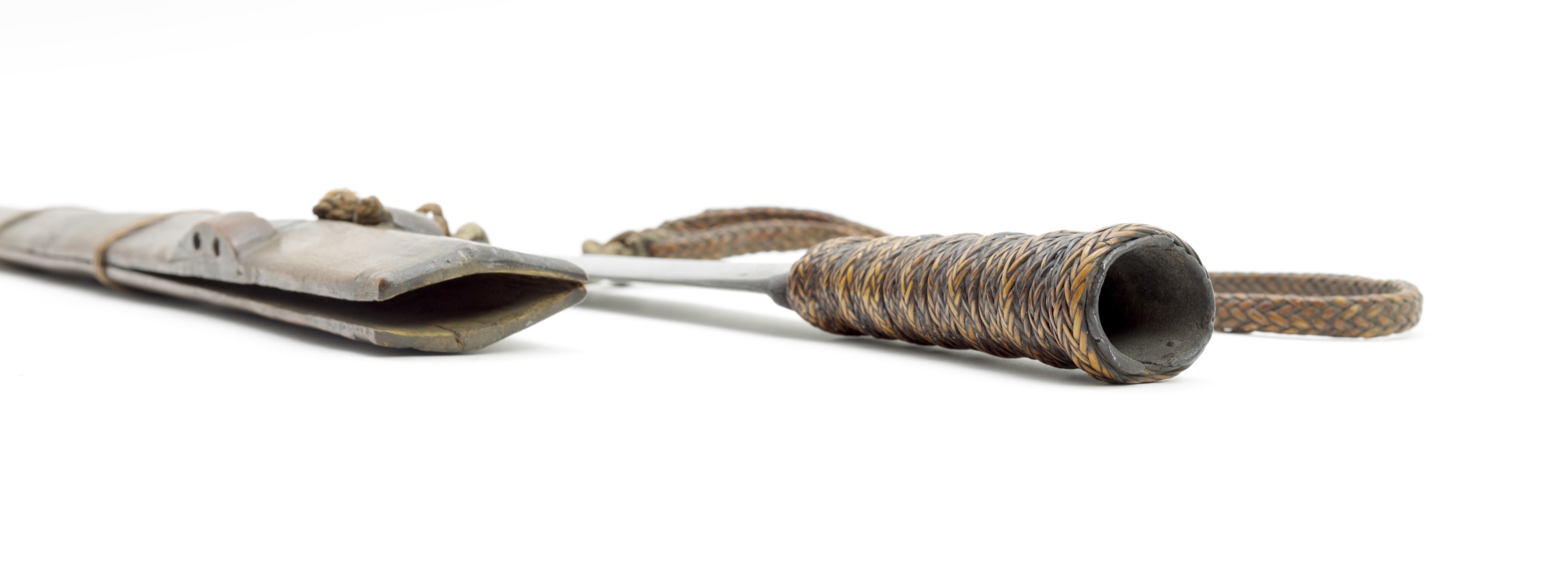
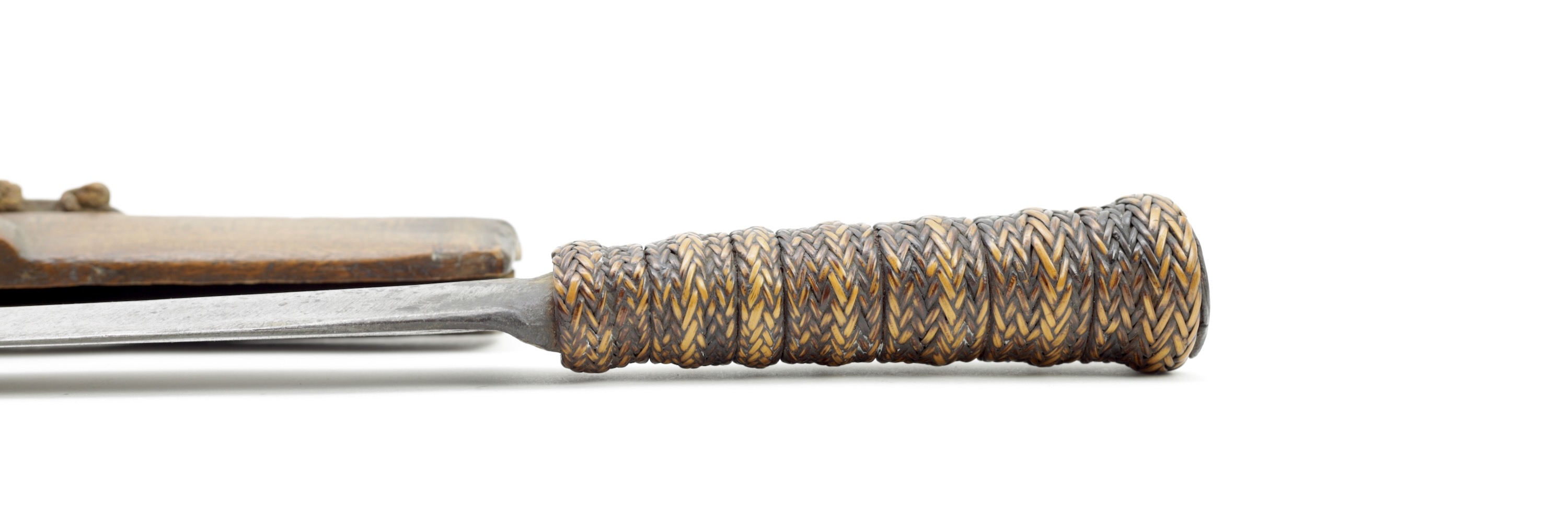

A rare type of dagger from South Kalimantan, loosely based on Islamic daggers seen worn by traders.
This peculiar sword was used by the Garo people of Assam for fighting, clearing the jungle, and animal…

